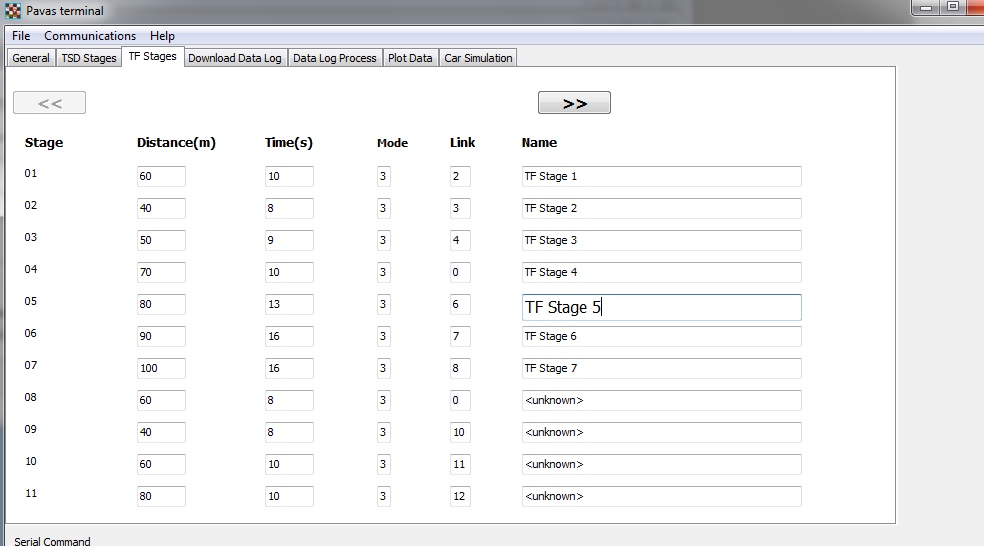
PAVAS Terminal Targa Florio Tab
The Targa Florio tab allows the configuring of speeds,distances,modes and links for a Targa Florio stage. The screen view is shown below.

Targa Florio stage settings present some challenges because the time and distance can varied markedly. The majority of stages are short and hence the distance is entered in meters and the time in seconds However, some stages maybe kilometers long and the time duration may be a number of hours. PavasTerm simplifies these difficulties by using variable input methods. For example if the distance is 6 KMS the normal value to enter would be 6000. The variable format technique allows the values to be entered as 6K. The PavasTerm program recomputes the value to 6000.
Time values are similarly, a problem. If the value was 5 minutes, then normal value would be 300 seconds. The PavasTerm program allows the time to be entered as 5:00. The value is then recomputed to 300 seconds. When the value is retrieved, it is displayed as 5:00. In the same way a time value of one hour and ten minutes would be entered as 1:10:00 and internally stored as 4200 seconds.
The mode values are 1 for a time only stage, 2 for an unknown distance stage, 3 for a known distance stage, 4 for long distance stage and 5 for a Sleeper stage. The link value is only used for Mode 3 stages.
Targa Florio events have a layout where several stages are run sequential. When one stage ends another starts. The PAVAS deals with the navigator timing issued by using the concept of “linked” stages. The number of the next stage is set in the link value, the PAVAS unit will automatically run that stage when the present stage ends. The stage with a link number of zero, indicates the end of the sequence of stages. In the above example, stages one to four are linked and stage number four is the last stage in the sequence.
Usually a sequence of stages is followed by a transport section where the vehicle travels to the next part of the rally. Using the mode parameter this can be next numerical stage.
When a stage is being run, PAVAS gives tone guidance and displays progress during a stage. This is desirable for short stages but can be irritating in long and transport stages. PAVAS has the concept of Sleeper stages. In these stages the distance and time expended are calculated to give the required average speed in the background. When required, a Sleeper stage can be accessed to provide updated status and guidance. Computation for Sleeper stages continues even if the vehicle is stopped.
PavasTerm can run independent of the PAVAS unit, so all the stage values can be entered and stored. Then, they can be uploaded to the PAVAS unit with one command.